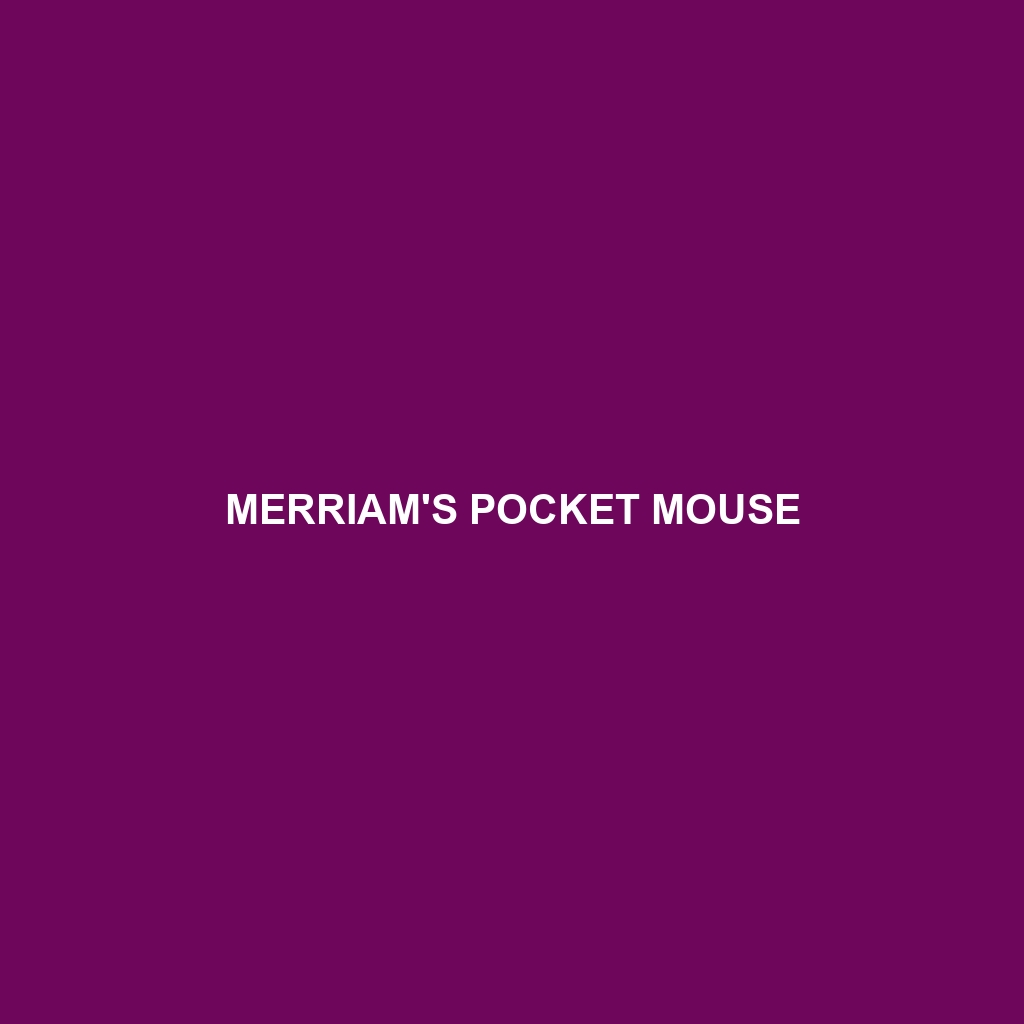Merriam’s Pocket Mouse
Common Name: Merriam’s Pocket Mouse
Scientific Name: Perognathus merriami
Habitat
Merriam’s Pocket Mouse is primarily found in the arid regions of the southwestern United States, particularly in states like Arizona, New Mexico, and parts of Texas. This species thrives in sandy deserts, grasslands, and scrub habitats where sparse vegetation provides both food and shelter. The preferred environment typically includes areas with loose soil, which facilitates digging.
Physical Characteristics
This small rodent typically measures about 8 to 12 centimeters in length, with a distinctively long tail that can exceed its body length. Merriam’s Pocket Mouse features soft, grayish-brown fur with lighter undersides, aiding in camouflage against the desert floor. Its large eyes contribute to excellent night vision, while its cheek pouches, which can expand significantly, are used to store food for later consumption, making them recognizable among pocket mice species.
Behavior
Merriam’s Pocket Mouse is primarily nocturnal, preferring to venture out during the cooler nights to forage for food. They exhibit fascinating behaviors such as burrowing to create complex tunnel systems for nesting and escape from predators. Socially, these mice are often solitary, but they may share burrows during particularly cold nights or under scarce food resources. Their distinctive hopping gait distinguishes them from other small mammals, which can be a point of interest for observers.
Diet
As granivores, Merriam’s Pocket Mouse primarily feeds on seeds, grains, and plant materials. They exhibit an interesting feeding habit by collecting and storing food in their cheek pouches, which allows them to hoard supplies for drier periods. Their diet also includes various insects, which provides essential protein. Understanding their feeding habits helps in studying the ecological balance within their habitat.
Reproduction
The breeding season for Merriam’s Pocket Mouse typically occurs in the spring and can extend into the summer, depending on environmental conditions. Females give birth to litters of 3 to 8 young after a gestation period of about three weeks. The young are born blind and helpless, developing rapidly and becoming independent within a few weeks. This high reproductive rate is crucial for maintaining population numbers in the wild.
Conservation Status
As of now, Merriam’s Pocket Mouse is not classified as endangered or vulnerable, but habitat destruction and changing environmental conditions pose risks to their populations. Conservation efforts aimed at preserving their natural habitat are important for ensuring their longevity within the ecosystem.
Interesting Facts
Merriam’s Pocket Mouse has specialized adaptations, such as the ability to survive on very little water, obtaining moisture primarily from the seeds they consume. Their cheek pouches are not only functional but also make them endearing and a subject of study among rodent behavior enthusiasts. Additionally, their unique ability to store food helps disperse plant seeds, which plays a vital role in the regeneration of their habitat.
Role in Ecosystem
Merriam’s Pocket Mouse plays an essential role in its ecosystem as both a herbivore and prey for larger animals. By feeding on seeds, they assist in seed dispersal and contribute to the health of plant communities. Additionally, as a prey species, they support a variety of predators including foxes, owls, and snakes, creating a balanced food web in their natural habitat.
